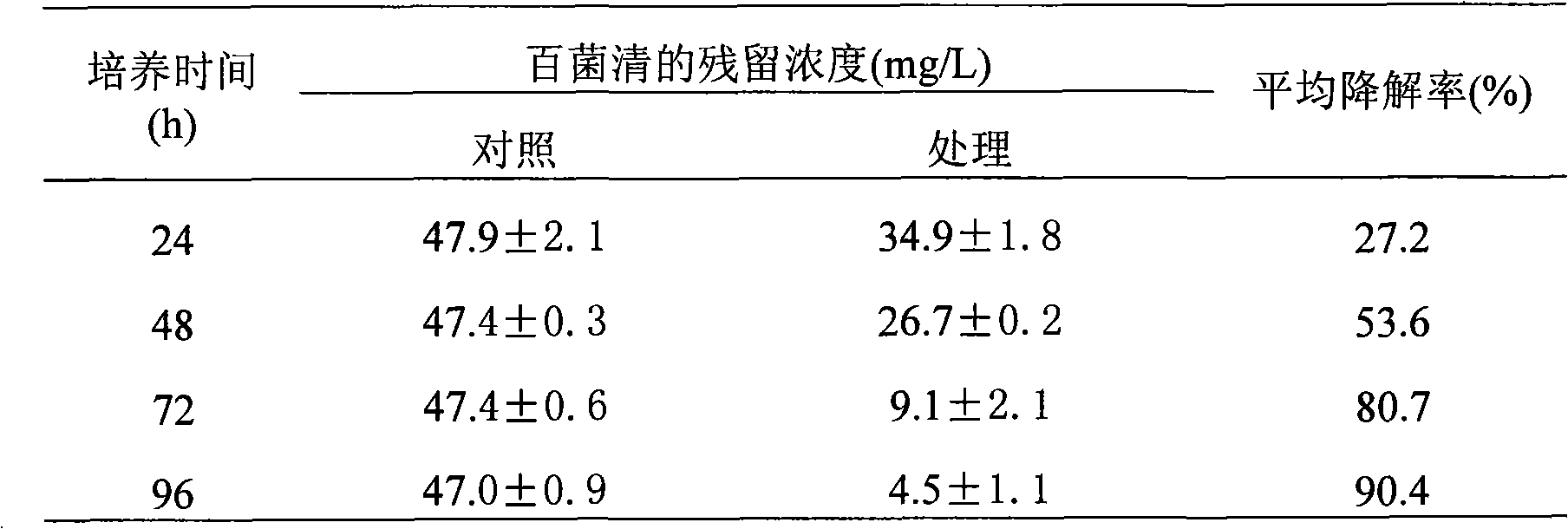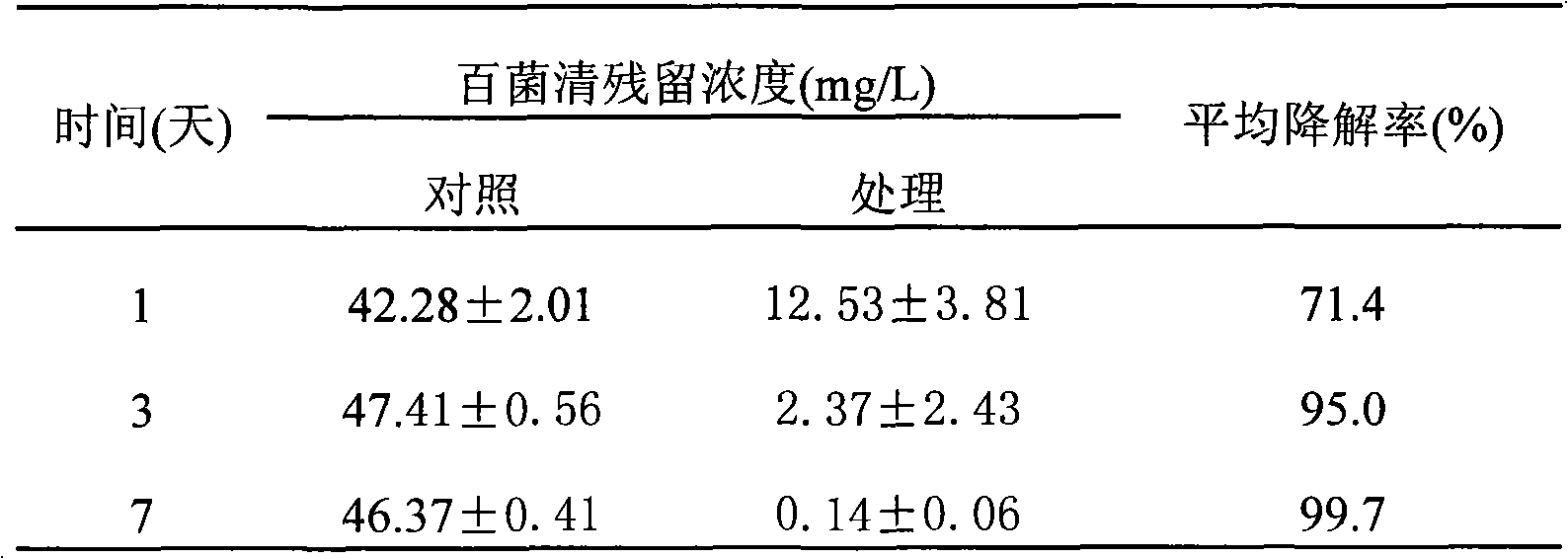Degradation strain capable of high-efficiency degrading bactericide chlorothalonil and use thereof
A technology of chlorothalonil and fungicides, applied in the biological field, can solve problems such as pollution and soil entry, achieve high-efficiency degradation capabilities, and avoid secondary pollution problems
- Summary
- Abstract
- Description
- Claims
- Application Information
AI Technical Summary
Problems solved by technology
Method used
Image
Examples
specific Embodiment 1
[0019] Specific Example 1: Strain TP-D1 grows with chlorothalonil as carbon source and degrades chlorothalonil
[0020] 0.5mL of TP-D1 bacterial suspension (1×10 8 cells / mL) were inserted into the inorganic salt culture solution containing 50 mg / L chlorothalonil, and repeated three times, and the inorganic salt culture solution containing the same concentration of chlorothalonil without inoculating bacteria was used as the control. 30°C, 180 rpm shaking culture, culture for 24, 48, 72, 96 hours, respectively, gas chromatography to detect the content of chlorothalonil. The results showed that after inoculating TP-D1, the residue of chlorothalonil in the culture medium gradually decreased, and its residue was only 4.5 mg / L in 96 hours, and the degradation rate of chlorothalonil reached 90.4% (Table 1).
[0021] Table 1 Degradation rate of chlorothalonil by bacterial strain TP-D1 in inorganic salt culture solution
[0022]
specific Embodiment 2
[0023] Specific Example 2: Degradation of chlorothalonil in soil by bacterial strain TP-D1
[0024] Pass the soil through a 0.2mm sieve, dry heat sterilization at 160°C for 1.5 hours, weigh 10g and put it in a 90mm petri dish, spray chlorothalonil mother liquor, so that the initial concentration of chlorothalonil in the soil is 50mg / L, Evenly mix the TP-D1 bacterial solution cultivated for 36 hours into the soil to make the concentration 10 7 Each gram of soil, soil moisture 20%, set 3 times to repeat, take the soil that adds medicine but does not add bacteria as control. The treated soil was incubated at room temperature, and samples were taken to detect the residual amount of chlorothalonil in the soil 1, 3, and 7 days after the treatment. At the same time, attention should be paid to spraying water the next day to keep the humidity at about 20%. The results showed that after the bacterial strain was cultured in soil for 7 days, the degradation rate of chlorothalonil could ...
PUM
 Login to View More
Login to View More Abstract
Description
Claims
Application Information
 Login to View More
Login to View More - R&D
- Intellectual Property
- Life Sciences
- Materials
- Tech Scout
- Unparalleled Data Quality
- Higher Quality Content
- 60% Fewer Hallucinations
Browse by: Latest US Patents, China's latest patents, Technical Efficacy Thesaurus, Application Domain, Technology Topic, Popular Technical Reports.
© 2025 PatSnap. All rights reserved.Legal|Privacy policy|Modern Slavery Act Transparency Statement|Sitemap|About US| Contact US: help@patsnap.com


